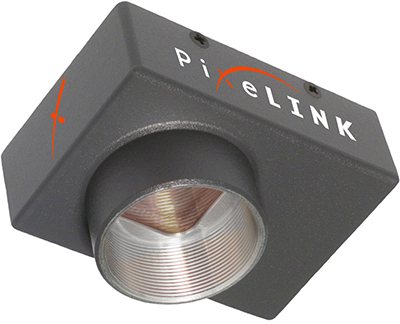 To help you get the best image results from your PixeLINK CCD or CMOS camera, here are the manufacturer’s answers to some of the most frequently asked questions.
To help you get the best image results from your PixeLINK CCD or CMOS camera, here are the manufacturer’s answers to some of the most frequently asked questions.
Q: What software is required to run PixeLINK cameras?
A: PixeLINK cameras require the PixeLINK camera drivers to function. The drivers are installed along with PixeLINK Capture or the PixeLINK SDK software. These software packages also include camera control applications and tools to use with PixeLINK cameras. Some third-party packages are also available for specific interfaces. Regardless of the applications used, the PixeLINK camera drivers must be installed first.
Q: What’s the difference between PixeLINK Capture and PixeLINK SDK?
A: PixeLINK Capture and the PixeLINK SDK contain the same camera control software and tools, including Capture OEM and the Wizards. The PixeLINK SDK also includes tools for users to develop applications that make use of the PixeLINK API.
Q: What are the mechanical tolerances for PixeLINK cameras?
A: PixeLINK aims for the highest degree of accuracy of repeatability. That being said, the stackup of tolerances makes it impossible to quantify. Metal components are built to within 0.005”. When assembled, the tolerances can either add up or tend to cancel.
Q: Why is my image darker in corners?
A: Darkening in the corners is usually a result of vignetting, which is typical for many lenses. Some of the most common causes of vignetting include the following.
- Optical axis of camera and microscope not in-line
- Camera lens limits the light path
- No optical adjustment between the microscope and the camera
- An unsuitable projection lens is already integrated in the microscope’s phototube or C-mount connection
- The optical system is off-center
Q: Why am I receiving ‘calibration not possible’ messaging when calibrating my camera?
A: Possibly the error is caused by the image being too dark. Use a proper Micrometer Slide to calibrate the software and adjust the exposure time to resolve the issue.
Q: What is signal-to-noise ratio and how can I improve it?
A: Signal-to-noise ratio is the difference between the ideal signal expected and the real-world background noise. Noise cannot be filtered or reduced once it becomes part of a signal. As a result, precautions to reduce noise generation are recommended. Some of these are built into the camera, such as good quality sensors and electronic devices. It is strongly advised to forgo inexpensive, consumer grade cables and choose high quality, machine vision, shielded cable to prevent the signal from being affected by noisy environmental conditions. Another tip is to avoid increasing the gain setting on your camera to improve signal-to-noise ratio. Since both signal and noise are increased when gain is increased, the amount of signal information is not significantly increased. Only the contrast of an existing image will be changed.
You may also be interested in reading What to Look for in a High-Resolution CMOS Sensor.
For information about, or help selecting, PixeLINK cameras for your application, visit PixeLINK Industrial and Machine Vision Cameras at Phase 1 Technology.
